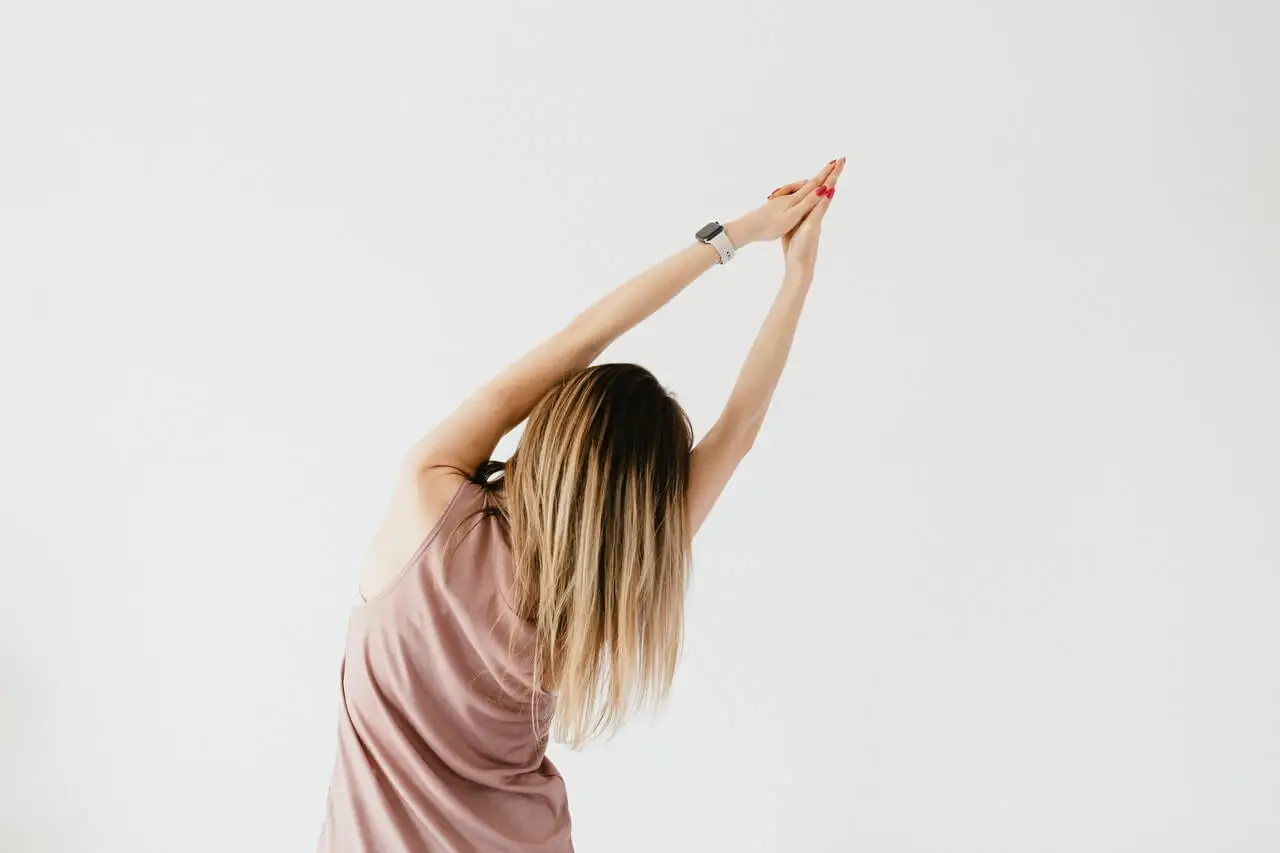The Trager® Method: The Treatment to Gain Mobility and Relax


Reviewed and approved by the nurse Leidy Mora Molina
Self-discovery and effortless body movements are closely related to the Trager® method. This technique states that the mind is the source of tension, and by dialoguing with it, you take care of its needs and optimize the functioning of the body.
The technique was developed by the American doctor and physiotherapist Milton Trager. The specialist treated people with neuromuscular conditions and his goal was to achieve light, easy and smooth movements for patients.
The approach is still valid and oriented to body awareness, to achieve flexibility, freedom, and stability. So, what’s this method all about? We’ll take a closer look at it in this article.
The characteristics of the Trager® method
The Trager ® methodology pursues a body-understanding wellness method. The Trager ® Method Association of Spain tells us that the technique induces deep relaxation and eliminates body stiffness, thanks to respectful listening that facilitates the release of tension.
Research in the Journal of Body and Movement Therapies highlights that patients have more in common with the Trager ® system, due to the way the body works. The paper argues that the sessions connect the subconscious and the physical with information that does not generate resistance.
There are two main characteristics of the Milton Trager technique:
- Improve performance and feel good: The exercises during the sessions promote performance and satisfaction.
- Undo mental tension: The creator of the method believed that there are body patterns that lead to illness and that the mind reproduces them. For Trager, the solution lay in unblocking the mental molds and releasing tension.
Like this article? We invite you to read: Muscle Pain and Tension Due to Stress
The benefits of the Trager® method
Through a treatment on a stretcher and exercises known as Mentastics ®, the Trager® system is linked to the improvement of back conditions. And according to an article published in Research in Psychiatry, exercise is ideal for reducing the symptoms of anxiety and stress.
Other advantages that the Trager ® method focuses on are the following:
- Increased mobility
- Skin elasticity
- Promotes lymphatic circulation
- Promotes coordination and posture
- Deep relaxation, lucidity, and peace of mind
- Less tension in muscles and joints
- Increases physical sensitivity, intuition, and body awareness

What does a Trager ® method session look like?
As the Osteopathic Medicine magazine explains, Trager ® practitioners combine an inquisitive mind with non-intrusive touches. This creates a state of open awareness that the founder of the method called “connection”; such a state is developed in sessions of 1 to 1.5 hours.
The process is divided into two phases. The first consists of stretching and gentle pressure on a stretcher. The therapist’s voice and hands open the dialogue with each part of the body, which responds by blocking or allowing movement.
The mind registers each sensation and by relaxing the body you advance to the second stage. Off the table and with the guidance of the coach, the person is then ready for the basic movements.
Release the shoulders
The purpose is that gravity helps with this work, which is supported by the body weight to open and energize them:
- Lift one shoulder without bringing it up to face level.
- Bring it down in one continuous movement.
- Repeat with the next shoulder, alternating several times.
- Finish with both shoulders in the same rhythm.
Opening and expansion
This dynamic Mentastics ® promotes calm, decreases stress, and increases cellular oxygenation; concentrating the expansion of tissues, while exploring body sensations.
- Place one wrist over the other and interlace your fingers.
- Raise your arms above your head.
- Let the weight fall on the right leg and foot.
- Tilt the torso to the left side, until you feel that you have lengthened the entire right side.
- Return to the starting position.
- Examine the sensations and repeat.
Swing your arms and legs
The Mentastics ® swing works as a muscle relaxant. You perform it by applying the following steps:
- Stretch your right leg.
- Raise your arms in the air, simulating a swing.
- Bend your knees slightly as your arms fall in front of your body to the left.
- Bring the weight to the left leg.
- Repeat as many times as the guide indicates.
- Return to the center and feel the body.
Flying with your arms
This phase of therapy is ideal for relieving tension in the arms, shoulders, and back muscles. It goes from minor to major movements:
- Spread your feet apart without taking them off the floor.
- Relax your arms.
- Turn the trunk to the right and then to the left, following the back and forth with your eyes.
- Let your arms “fly” with each movement from side to side.
Surrender to gravity
For this activity, you need to relax one side of your body and balance your weight on the other. The idea is to let yourself be carried by gravity.
- Drop your weight on the right leg while the side, shoulder, and arm hang.
- Initiate a delicate swing toward the natural wind direction.
- Gently move your right arm and hand a little.
- Return to the center and examine if you notice any change.
- Start again, but you will notice that the movement is loose.
- Repeat the same work, starting with the left leg.

Lift your leg to the sky
This is a movement that you repeat several times, but each time you ask yourself how you can do it, making less effort.
- Separate your feet in parallel.
- Lean your body weight on one leg.
- Keep your balance and calmly raise the opposite leg.
- Let the leg fall in a continuous action.
- Stop and observe the vibration.
- Start again, with the opposite leg.
Read more here: Quick Warm-Up: 7 Dynamic Stretching Exercises
Who can practice the Trager ® method?
The Trager ® method is suitable for anyone, especially if they experience frequent fatigue or tension. It’s also idea for those who wish to improve posture and for patients whose mobility was affected by an injury.
It’s essential that the sessions are conducted by a professional belonging to the approved associations of the method. So, are you going to try the technique?
All cited sources were thoroughly reviewed by our team to ensure their quality, reliability, currency, and validity. The bibliography of this article was considered reliable and of academic or scientific accuracy.
- Blackburn J. Trager ®: En la mesa – Parte 3. Revista de Terapias Corporales y de Movimientos. Vol. 8. Núm. 3. pp. 178-188. Reino Unido; 2004. https://www.mendeley.com/catalogue/b167a89b-16de-34d4-b5be-52a7c20dceda/?utm_source=desktop&utm_medium=1.19.4&utm_campaign=open_catalog&userDocumentId=%7B16c7d855-44ac-4abf-8450-005965a09e82%7D
- Blackburn J. Trager ®. Mentastics ®. Presencia en movimiento – Parte 4. Revista de Terapias Corporales y de Movimientos. Vol. 8. Núm. 4. pp. 265-277. Reino Unido; 2004. https://www.sciencedirect.com/science/article/abs/pii/S1360859204000294
- Cosco T, Firth J, Rosenbaum S, Salum G, Schuch F, Stubbs B, Vancampfort D, Veroneses N. Un examen de los efectos ansiolíticos del ejercicio para personas con ansiedad y trastornos relacionados con el estrés: un metanálisis. Investigación en Psiquiatría. Vol. 249. pp. 102-108. Estados Unidos; 2017. https://www.sciencedirect.com/science/article/abs/pii/S016517811630909X?via%3Dihub
- Heil M. Integración psicofísica de Trager ®. Medicina osteopática. Vol. 10. Núm. 3. pp. 25-30. Alemania; 2009. https://www.mendeley.com/catalogue/d7802995-a036-3709-bec0-4fcf8eeb2836/?utm_source=desktop&utm_medium=1.19.4&utm_campaign=open_catalog&userDocumentId=%7B4b93ce0a-9759-4dba-a883-6e8f00d912b0%7D
- Milton Trager, M.D. y su trabajo. Trager International. https://www.trager.com/trager-history
- Qué es Trager ®. Asociación Método Trager España. España. https://www.trager.es/que-es-trager/
This text is provided for informational purposes only and does not replace consultation with a professional. If in doubt, consult your specialist.








